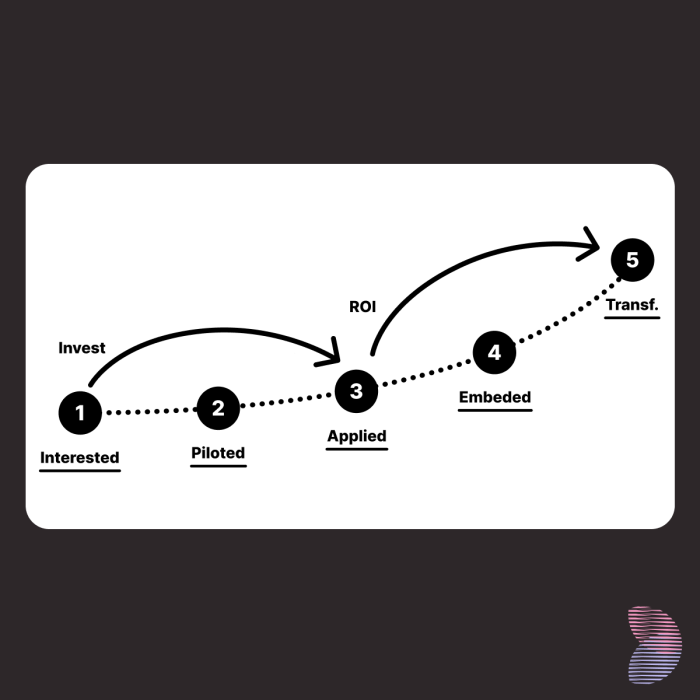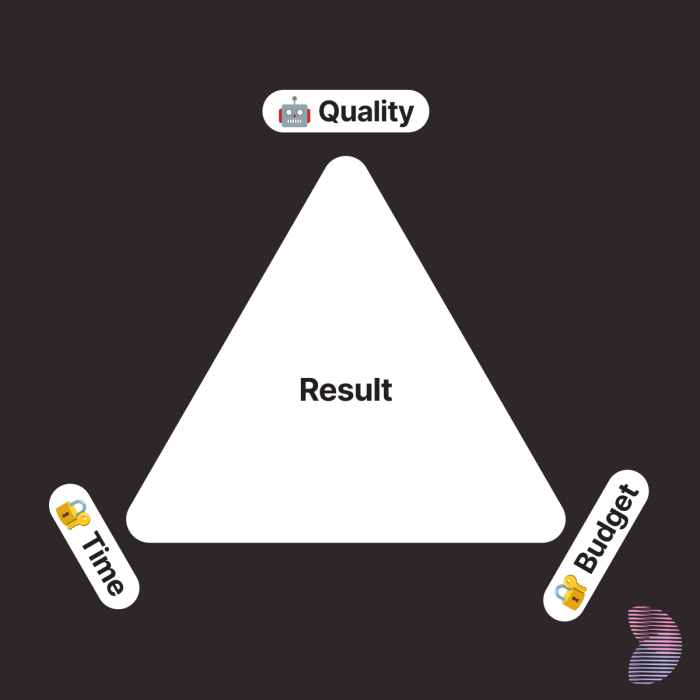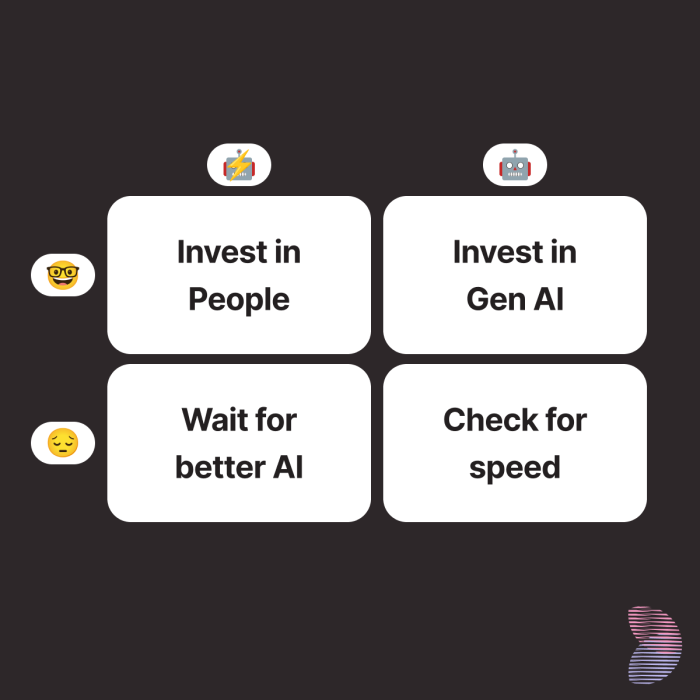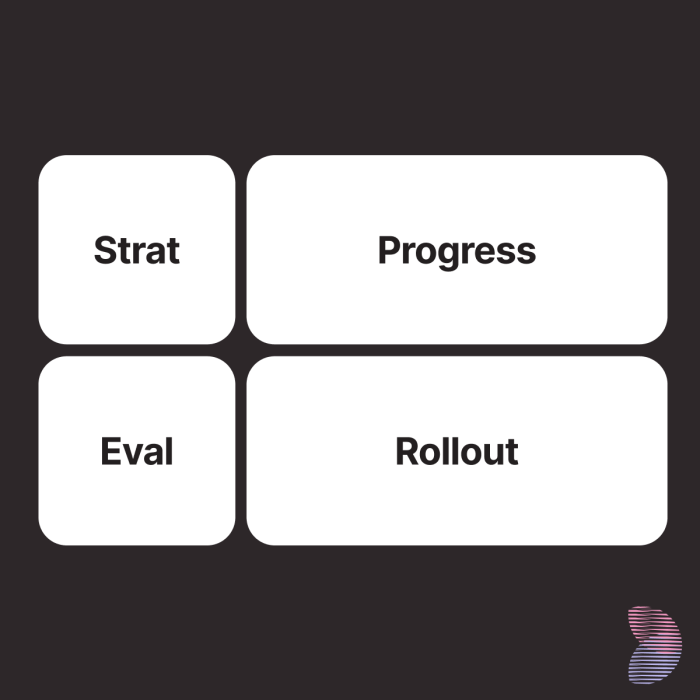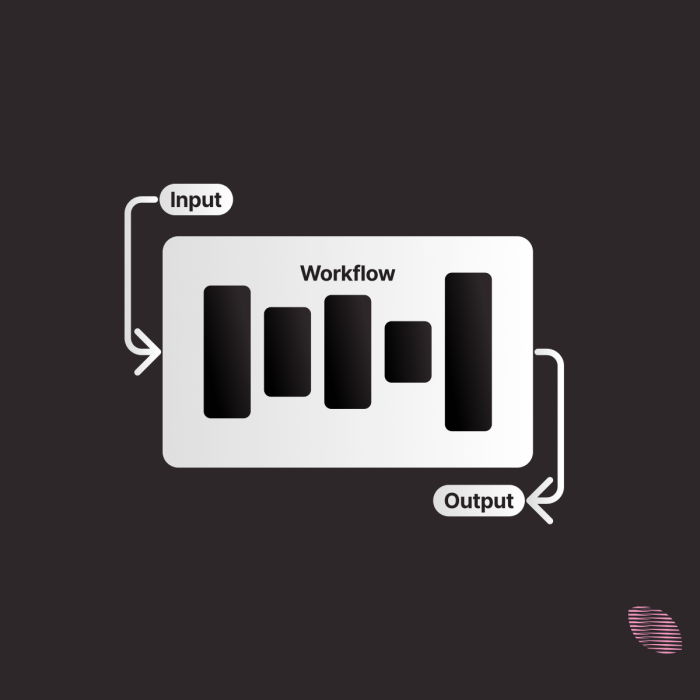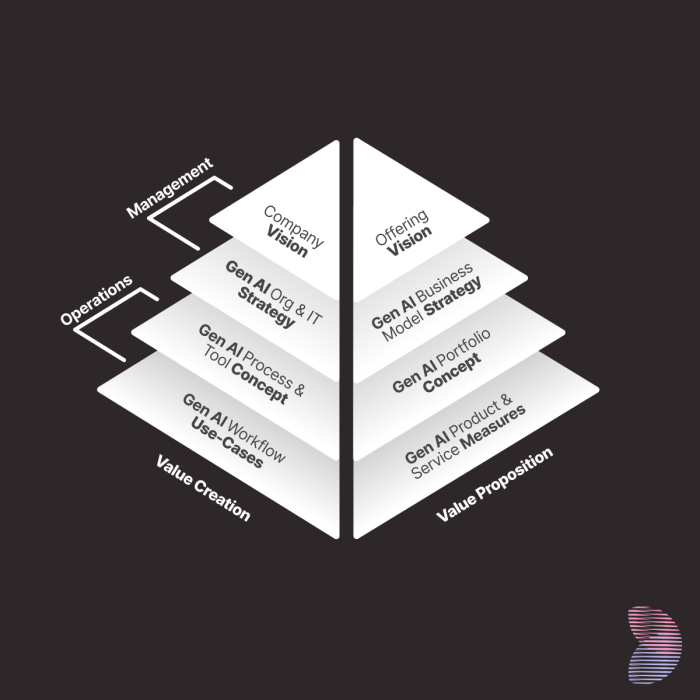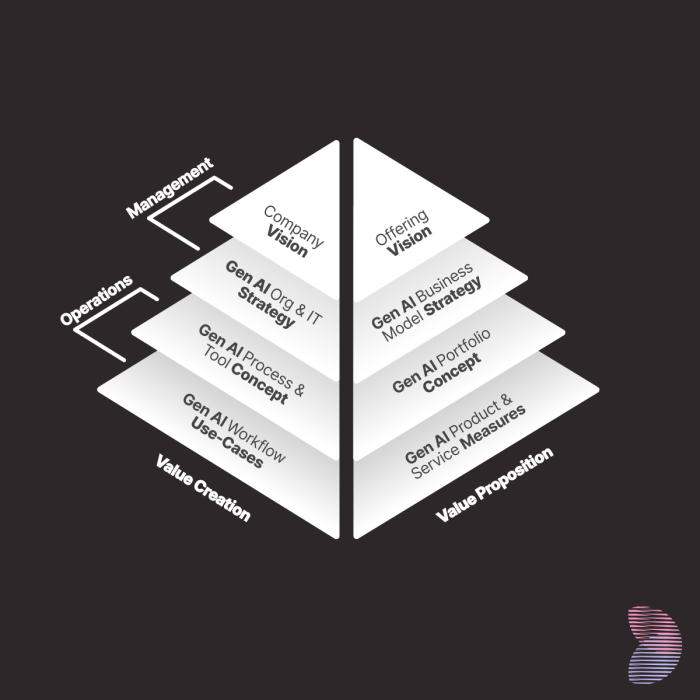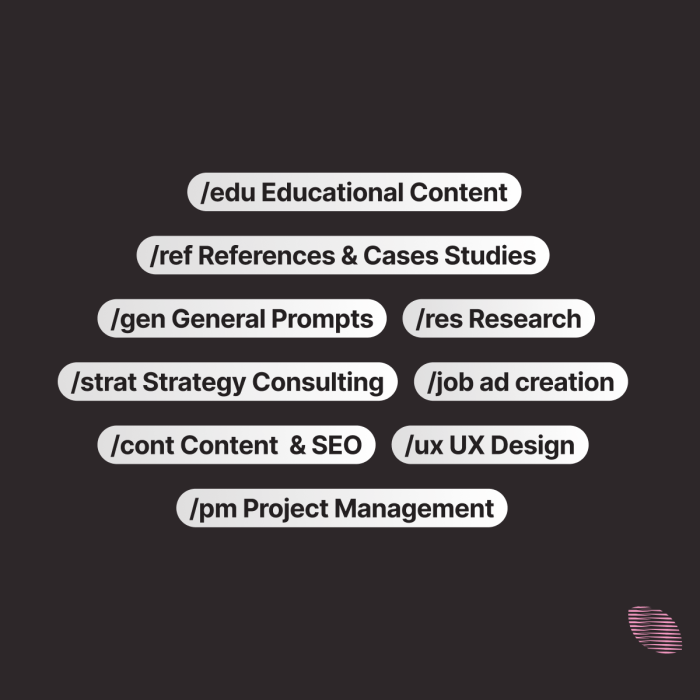Gen-AI: Game-Changer
or Just Hot Air
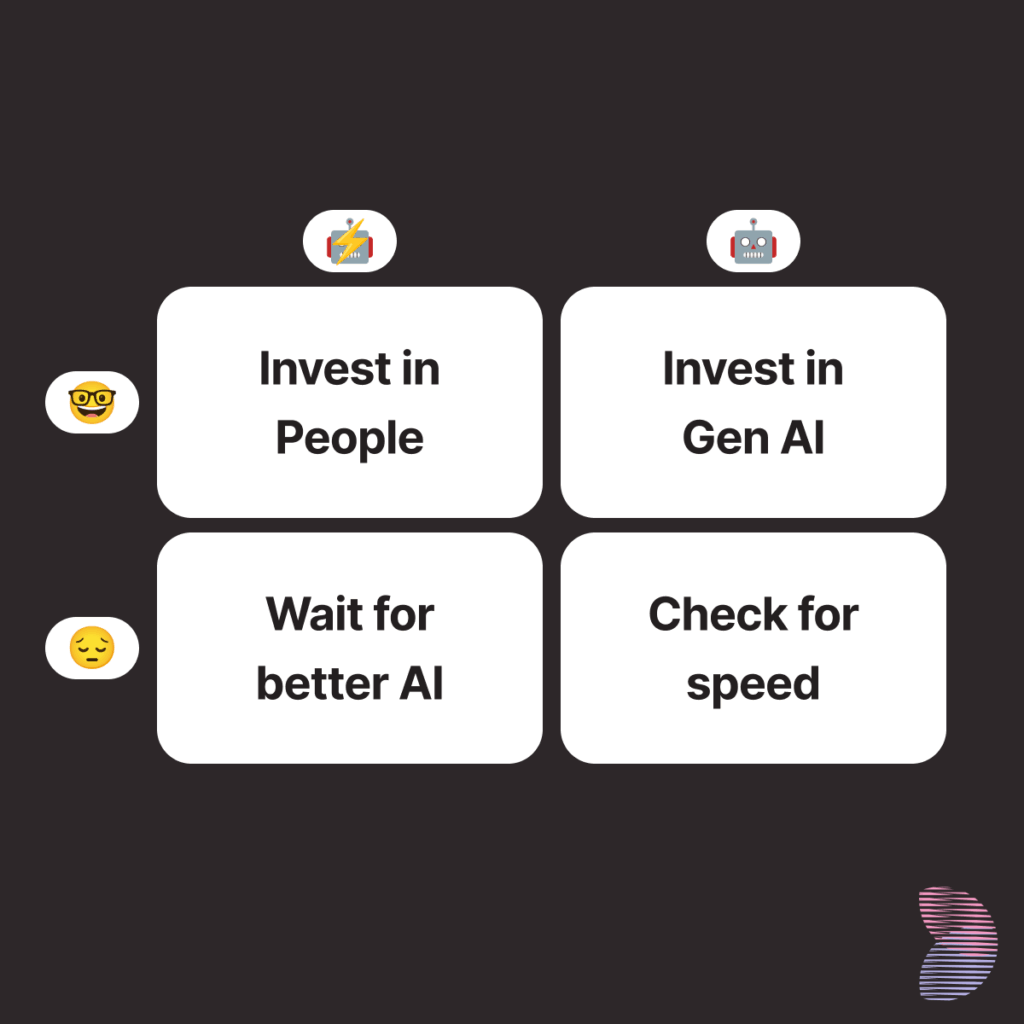
Let me be clear from the start: Gen-AI isn’t just another technical toy – it’s a comprehensive, transformative force that fundamentally changes how companies operate. Those who are still thinking in traditional patterns will soon discover that the old paradigm of decision-making in narrow, specialized fields is no longer sufficient. What we need here is a more comprehensive approach that’s flexible enough to penetrate the various levels of an organization.
The real challenge, and I want to emphasize this, lies in changing a company’s culture so that it not only accepts this new reality but actively shapes it. Anyone who doesn’t recognize this risks getting lost in the complexity of the technology while endangering their own competitiveness. Leaders must not only deal with the latest developments in Gen-AI but also enable their teams to embrace these changes and integrate them into daily workflows.
Without this deep understanding and willingness to change, any investment in Gen-AI will ultimately fail. This technology challenges us not just technically, but culturally – and that’s exactly where its true potential lies.

There are 4 Scenarios
to Distinguish
When it comes to making decisions in complex contexts, it’s always worth thinking in scenarios. That’s the only way to ensure everyone is talking about the same thing when recommendations are made. That’s why I’ve developed four scenarios that should help make most use cases manageable.
But attention: Gen-AI doesn’t generally speak for an investment decision – it must always be considered purpose-bound. The use case determines which tools are relevant and what influence they have on the company. The Return on Investment (ROI) is often the measure of all things here. But one crucial question remains:
If I know the company processes and can realistically assess Gen-AI, how do I then judge whether the deployment is worthwhile?
When introducing Gen-AI, you must always take the existing system as a basis where:
- The output frequency and work effort are defined for each produced artifact in existing tasks and established processes. Deviations from this are handled through general process and estimation adjustments.
- The expectations for output quality are defined and tested. Deviations from this are handled through adjusting employee behavior.
There are 4 Scenarios
to Distinguish
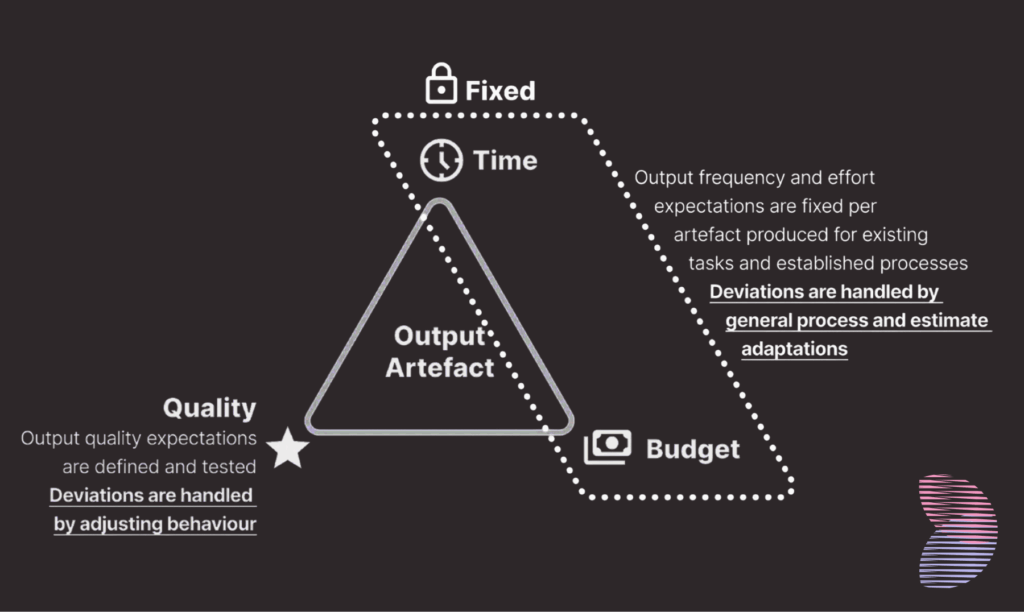
To clarify this, we need to talk about the classic project management triangle. It’s essential to take the economic reality of existing processes and workflows as a foundation. Time, budget, and quality are known to be in a constant interplay. If I want to increase quality, I must invest either more time or more budget, or both. In existing workflows, this balance is often already found or heavily constrained by time and cost pressure. This can lead to the necessary quality not being achieved within the given time or budget. Such processes exist in every company – whether due to market changes or the loss of key personnel.
Starting from this reality, evaluating investment cases becomes significantly easier. The central question is: Can Gen-AI deliver the required quality with the existing budget and available time? There are essentially four possible answers here, which I’ll examine more closely below.

#1 Employees Don't Deliver the Necessary Quality, but Gen-AI Tools Do
As I’ve already indicated, it’s not the inability of employees that leads to suboptimal results in some cases, but rather the way such tasks are distributed and prioritized in companies. It’s high time to think about why such a young technology as Gen-AI works more efficiently in certain areas than experienced professionals.
The tasks I’m talking about here are notorious: They appear in large numbers, get hardly any time allocated, and are often of low value for the overall business. Nevertheless, they exist in nearly every company. In other words, these are necessary but unloved activities that everyone would prefer to avoid. This leads to these tasks frequently not being actively planned, and employees have to handle them „on the side.“
It’s no wonder that they want to check these off as quickly as possible to dedicate themselves to more important projects. Time for diligence often falls by the wayside.
Examples of tasks that fall into this scenario are:
Meeting protocols
Internal documentation
Simple support requests handled with simple FAQ texts or direct information
Summaries
To-do lists
Translations of simple texts
Transferring existing information into specific formats (forms, lists, tables, …)
All these tasks share a few characteristics, namely:
Tasks that consume resources solely due to their quantity
Tasks that are monotonous, repetitive, and easy to describe
Tasks whose output is simple to evaluate in quality
Tasks that are well automatable
Tasks that employees would like to get rid of
Tasks for which there are usually already (specialized) solutions that can be copied or purchased
Tasks whose quality requirements are homogeneous across companies
To summarize: When Gen-AI delivers results that exceed human capabilities, the investment decision becomes crystal clear: Investments in this technology are unavoidable, even if they may initially appear as a cost factor. It’s about recognizing and acknowledging the indirect increase in productivity. This type of investment may not offer an easily measurable ROI, but in the larger context of the business model, positive effects like increased quality and enhanced speed should become noticeable.
#2 Gen-AI Tools Deliver the Quality Needed, but So Do Employees
It’s an old wisdom that humans are often surpassed by the tools they create themselves. But more often, it shows that both human and machine, each in their own way, handle the arising tasks with the required quality and within the given timeframe.
This shouldn’t surprise us. After all, most tasks in companies are based on routines that must be handled by specialists with the required precision and efficiency to ensure the main value creation. Nevertheless, let me remind you: To unleash the full power of AI models, experiments and a deep understanding of internal workflows are essential.
The truth is that AI models aren’t yet mature enough to handle complex, multi-stage processes fully automatically.
These types of tasks are often highly specialized activities that require a high degree of contextual knowledge. And yet – although the approaches are clearly defined and comprehensible – the question remains: Why are our specialists still overloaded? Is it the skills shortage that causes this overload? Or is it the over-specialization within companies that ultimately causes the core processes of value creation to falter?
Examples of tasks that fall into this scenario are things like:
Creation of specialized concepts
Assessment or evaluation processes
Idea development
Production of complex specialized content for internal use or marketing
Work on portfolio or core products
Specialized research and preparation of information
Creation of meta-content used as a basis for further work
All these tasks share some characteristics, for example:
Tasks that take a long time
Tasks that are handled by specialists with expertise
Tasks whose output is difficult to evaluate in quality
Tasks that represent a core of value creation
Tasks that are the work content of specialized roles
Tasks for which there are no (specialized) solutions because approaches are too heterogeneous
The Takeaway: Should the quality of Gen-AI and specialists be on par, the question of investment remains undecided. But that’s no reason for resignation, but for reflection: It’s about recognizing the true value of AI investment. If AI is either faster itself or gives specialists a speed boost, then the ROI becomes quickly visible. Productivity gains that are clear and measurable provide the proof.
#3 Gen-AI Tools Don't Deliver the Quality Needed, and Neither Do Employees
As I’ve already outlined in scenario #1, we often face the challenge that due to employee departures or lack of agreement on processes, the quality of work results falls short of expectations. It becomes particularly critical when dealing with highly specialized tasks that even advanced AI tools cannot solve satisfactorily.
In such cases, many companies show another problem: a competency vacuum. No one is there who brings the necessary expertise to precisely define the required quality standard. A condition that cries out for change.
These tasks share some characteristics:
Tasks as described in #2
Tasks for which the specialized personnel are missing
Complex tasks for which a detailed quality definition is missing
Complex tasks for which a detailed procedural model is missing
Conclusion: When neither Gen-AI nor specialists deliver the necessary quality, it’s essential to invest in new employees. Blindly trusting technology is a risky game in such situations. It would be a fallacy to believe that Gen-AI could spare us from dealing with the subtleties and content of a specialized field.
What’s needed here, are experienced and highly qualified professionals who can not only assess the quality of results but are also capable of planning and implementing processes, procedures, and structures. Once this solid foundation is laid, you can – as described in scenario #2 – consider whether Gen-AI offers added value.
#4 Gen-AI Tools Don't Deliver the Quality Needed, but Employees Do
You might think this scenario is self-explanatory. Even though we advise companies in the world of Gen-AI, we should be clear that there are situations where an investment in this technology is simply inappropriate. When employees deliver the expected quality and Gen-AI doesn’t, the motto is: patience.
But attention: patience by no means means ignoring Gen-AI. Rather, employees should continue to experiment regularly and systematically with the tools to understand their potential. Too often, we’ve experienced companies prematurely dismissing Gen-AI as irrelevant just because they send superficial prompts to ChatGPT.
Important: Of course, there are moments when Gen-AI isn’t the ideal investment – what’s essential, however, is that this decision isn’t made from the gut, but is based on a solid understanding of the possibilities. In the dynamic world of Gen-AI, however, this scenario can quickly change and develop in a completely different direction.
There's More Than Just the Obvious to Consider
The consideration remains incomplete if you focus solely on internal processes and the takeover of tasks by Gen-AI. A look beyond the horizon is essential. The competitors? Yes, sometimes they offer us an impressive preview of how Gen-AI revolutionizes similar task areas. But the real challenge lies in the change of user behavior.
These changes aren’t mere trends but signal profound shifts that will challenge every business model. It’s becoming increasingly obvious that some business models will have no chance of survival in the upcoming Gen-AI-driven future.
Competitors Are Also Playing
It seems many companies align their strategies with competitors – and that’s often sensible. But when it comes to introducing Gen-AI, there are some important points to consider:
The technology is so new that your competitors are also still in experimental mode – best practices simply don’t exist yet
Moreover, the changes are mainly internal and therefore hardly visible from the outside
The initial efficiency gains achieved through Gen-AI might initially appear as additional margins with competitors before new standards are established
But once the price war really starts, it’s too late to begin Gen-AI implementation. Because these processes are slow, detailed, and require profound changes.
User Behavior Will Change Fundamentally
While Gen-AI revolutionizes internal company processes, user behavior won’t remain untouched either. The signs are already recognizable, and existing trends will be further accelerated by this technology. Let’s just look at today’s reality: Between the user and the company, there’s often already an AI – for example, in the form of a search engine.
This separation between consumer and provider will become even deeper in the coming years. This means the original information source is losing importance, and the direct connection between sender and receiver is changing radically.
Some Business Models Will Cease to Exist
As I’ve already indicated, these changes leave clear traces in companies and their business models. Internal processes accelerate, which reduces costs, and the market forces a downward price adjustment through this efficiency gain. But that’s just the tip of the iceberg: The changed expectations and behaviors of users force companies to readjust their portfolio and find the right talents.
Gen-AI Investment Decisions Aren't Obvious Decisions
As I’ve already indicated, Gen-AI is a topic that you can’t simply comprehend comprehensively through selective external expertise. It requires systematic and continuous engagement within the company. Only this way can you identify those task areas where Gen-AI adoption really makes sense.
These task areas consist of a collection of use cases that, individually considered, might not bring immediate ROI but can achieve enormous efficiency gains through their applicability to similar cases in the same area. Gen-AI should be viewed less as a „top-down“ process, as you know it from other technologies. Rather, it’s a „bottom-up“ change management process comparable to approaches like Agile or user-centricity.
Takeaway 1:
Nobody Can Avoid
Staying Engaged
For employees, decision-makers, and leaders, it’s essential to understand that Gen-AI isn’t a peripheral phenomenon. Progress doesn’t stop at the doorstep – it enters whether you welcome it or not. Each of us will inevitably have to deal with this technology. Even if you recognize today that current Gen-AI models don’t yet have the maturity for your own area, there’s no room for standstill.
Takeaway 2:
Simple Answers Are Nice
but Unrealistic
The question of whether Gen-AI should be used isn’t one that can be answered with a simple yes or no. In reality, we’re at a point where there are countless nuances and possibilities that we simply can’t brush away. It’s no longer sensible to hope for general answers; rather, we should be aware that every department, every team, even every individual task requires its own answer to this question.
It’s essential that we rely on the expertise of our employees – because they’re the ones who know best what works in their area. And if we rely on this assessment, then we must also have the courage to follow this judgment consistently, without ifs and buts.
